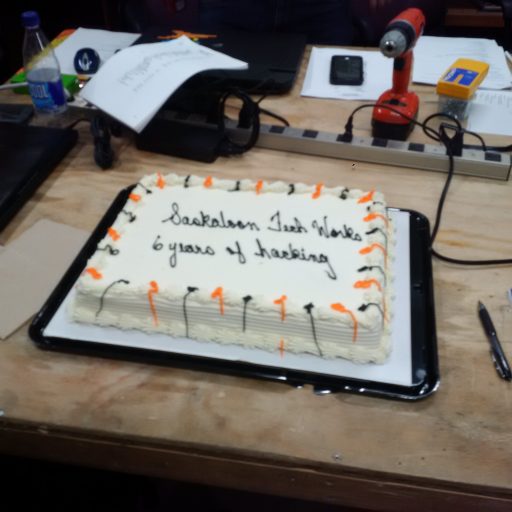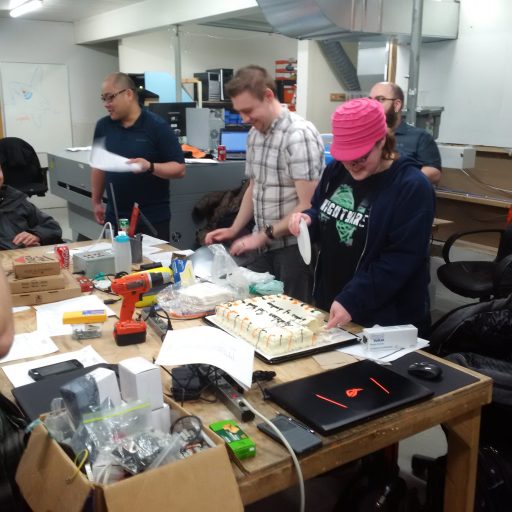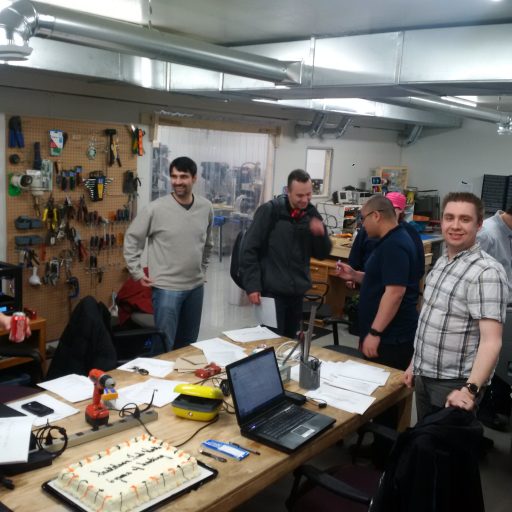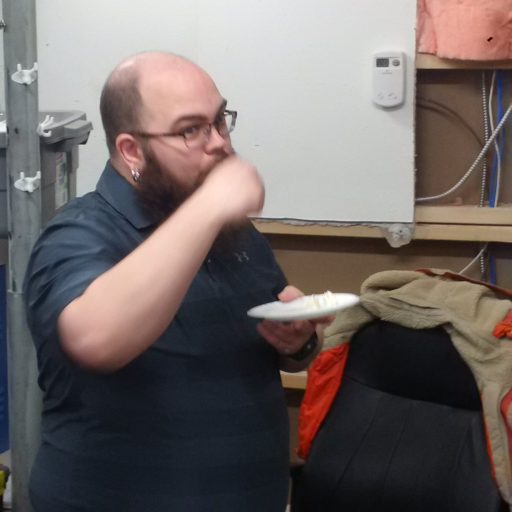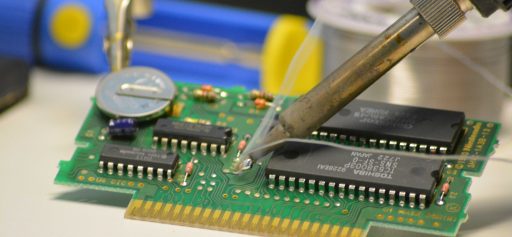I had a chance to do some “making” on TV this morning.
Month: March 2017
Makerspace Program at SPL Main Library

Are you interested in learning about the availability of Makerspaces (with new technologies for you to use) in Saskatoon? Well…
I’m very excited to invite you to an exciting (free) program the the Main library (Theatre) on March 30th at 6 pm.
At 6 pm in the Meeting Room, there will be several local exhibitors available to demonstrate the new technology and Makerspace available locally. Following that, we will screen a film called “Maker”. The trailer is here:
http://makerthemovie.com/about/
Three speakers will follow:
– Albert La from Sask. Techworks
– Erin Romanyshyn from the new Round Prairie library
– Sheila Maithel from Tailor Magic
Reception, coffee provided. Free admission.
ESP-12F and Breakout Board
The ESP8266 module is a cheap and relatively easy way to build an Arduino-style project with WiFi capabilities. It’s not without its quirks, though. The following should help you get up to speed quickly.
The ESP is a power hungry device. It requires a solid 3.3V DC power supply. (Probably in the 1A range, depending on what else you are powering from the same supply. It doesn’t draw this much steadily, but it draws bursts while transmitting.) Make sure you have appropriate capacitors mounted as close to the module as possible. Also note, this module is 3.3V and is NOT 5V tolerant. If you apply 5V to any of the pins, you will destroy it. Use something like this http://sktechworks.ca/product/quad-logic-level-converter/ to interface to any 5V devices.
Minimal Setup:
In order to operate, the ESP-12F module requires the following:
| Pin | Resistor | Connection |
|---|---|---|
| VCC | 3.3V DC | |
| GND | GND | |
| GPIO0 | Pull Up | |
| GPIO15 | Pull Down | |
| CH_PD | Pull Up |
The breakout boards we have contain the resistors for GPIO15 and CH_PD. The only connection you need to worry about is GPIO0, which toggles between “Run” and “Bootloader.” (A pullup on Reset is not a bad idea, but not entirely required.)
Minimal for programming:
In order to program the ESP module, you need to pull GPIO0 low and have control of the reset line.
| Pin | Resistor | Connection |
|---|---|---|
| VCC | 3.3V DC | |
| GND | GND | |
| TX | RX on serial adaptor | |
| RX | TX on serial adaptor | |
| Reset | Pull Up | RTS on serial adaptor or pushbutton to GND |
| GPIO0 | Pull Up | DTR on serial adaptor or jumper/button to GND |
| GPIO15 | Pull Down | |
| CH_PD | Pull Up |
If your USB-UART adaptor has RTS and DTR, you can program this module as easily as an Arduino. If you don’t have those pins, don’t sweat it. Simply wire GPIO0 Pulled UP, then jumper it to GND for programming. Do the same with Reset. (Use a pushbutton for easier access.) When you are ready to upload your new program, you will need to press and release the reset button. (or ground and unground a jumper.)
In your Arduino IDE, the current best package for ESPs is:
https://github.com/esp8266/Arduino
The installation instructions are fairly clear on that page.
AGM Thank You!
Thank you to everyone who came out for our Annual General Meeting. This was our largest turnout ever. (People kept arriving after we started, too, so the minutes don’t actually reflect the final number.)
The revisions to the bylaws were passed as proposed. This will bring our bylaws better in line with how we have actually been operating for years.
Our new board was elected. John Tumbach, Albert La, James Cooper, and Scott Walde all stood for re-election. New this year, Andrew Wright was nominated. All five candidates were elected unanimously.
Since we failed to do anything special on the 6 year anniversary of our incorporation, (Some of our members had other plans that night — I don’t understand their priorities.) we decided to recognise it a month late. Cake was eaten.
Soldering Workshop
There will be a electronics soldering basics workshop held at Saskatoon Techworks.
It will take place Thursday March 23, 2017 7:00 pm – 10:00 pm
Here are some of the things that you can expect to learn:
- Soldering Safety
- How to identify the electronic components
- Selecting an appropriate soldering iron
- Soldering techniques
- Identifying good solder joints and common problems
- Practical application by building a small project
Cost for Hacker/Maker Space Members: $10
Cost for Non-Members: 15$
Saskatoon Techworks members can use the following link to apply the discount code.
Hope to see you out there.

